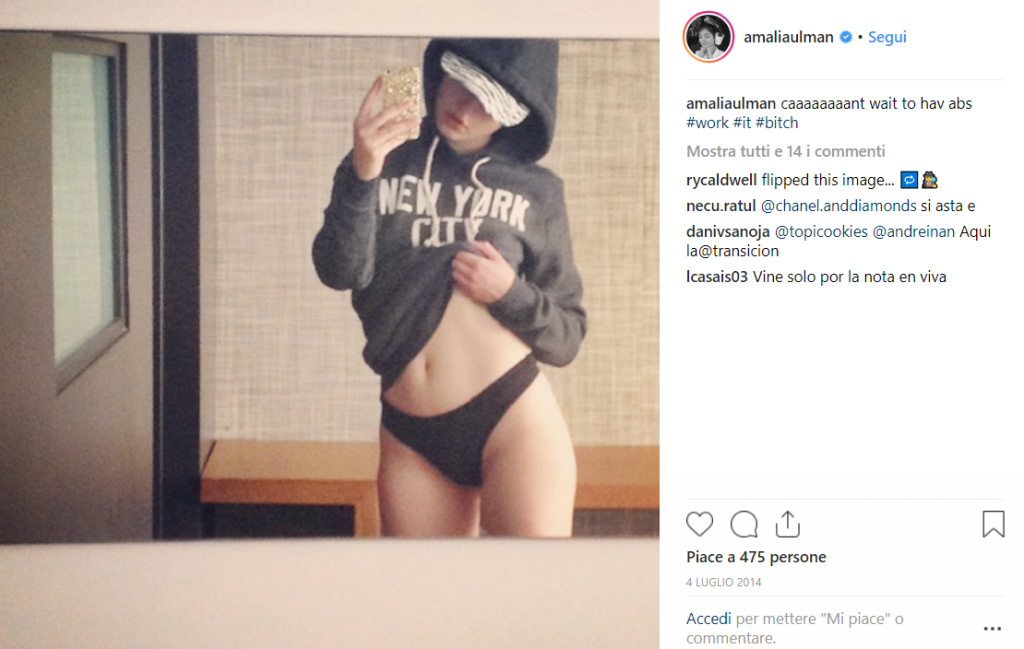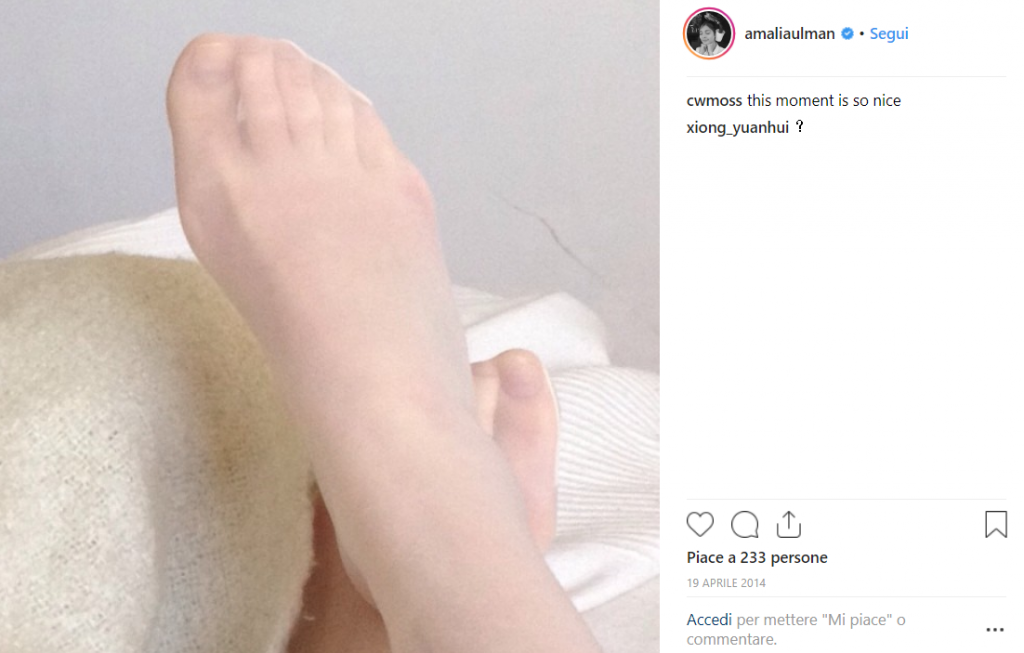
Excellences & Perfection is an art performance appeared for the first time in 2013 on Instagram. Amalia Ulman, the young author, stages a recounting of events on her Instagram profile where her followers can witness the metamorphosis of a simple country girl who decided to leave her small town in order to move into a big city, chasing her dream of becoming a fashion model. Depression and addiction came little after, due to an unstable relationship with a much older man who pays for her plastic surgery after her umpteenth emotional crisis. All the events in this story have been progressively published on Ulman’s Instagram account through images, without ever revealing their fictitious nature, and therefore generating, at the same time, dismay and excitement in her growing mass of followers.
After posting 186 photos and having reached 89,000 followers, Amalia has finally admitted that the Instagram profile, and the story linked to it, was actually fake – conceived as an art performance. The Argentinian artist thus unveiled not only the real nature of her images but also a great truth about our time; today social networks and technology are parts of the social fabric in which we are forced to expose ourselves in a constant and viral way.
The photos, mostly elaborated selfies, focus on the female figure and particularly on what it means to be a “female” in the new era of techno-culture.

Through her work Ulman shows a completely fetishized feminine world and the misuse of our bodies. In an interview she declared “I was on an strict diet, I went to the gym, to pole dancing classes, got my hair and nails done – it was hours and hours of work.”
Amalia emphasizes how contemporary women have to constantly “work” on their image in order to appear perfect, and to get closer to the flawless imagery perpetuated by media.
With the help of low cost plastic surgery, this process of self transformation has become, according to philosopher Rosi Braidotti, the main cause of “body normalization politics” imposed and pursued by the techno-culture through “bio info-technology” devices, such as cosmetic surgery, fitness blogs and slimming pharmacological products. A culture based on communication technologies, which employ all their means to impose a unified body model founded on thinness, hygiene, and eternal youth.
According to Foucault, visual devices of the current representation system have expanded the gaze of the Panottico, beating heart of body-control diets in late modernity. Nonetheless, this process of normalization has never really succeeded in suppressing other cultural counter-models, such as sick people, addicts, rebels, refugees, migrants and precarious, figures that keep underlining the failure of contemporary social imagery, steeped in deviant representations.
Within Ulman’s work we discover a female body in its more direct and vulnerable physical thickness. The narrative is about a young woman who pursues the dream of a white, rich and physically striking femininity, but very quickly, and inevitably, cosmetic surgery, prosthetics, anorexia and antidepressants prevail. According to Braidotti “in an historical and geo-political extremely biomedicalized system, it seems clear that what we keep calling our body, in truth is almost a virtual technological set immersed in the psycho-pharmaceuticals industry, in bioscience and the new media”.


The industry of body, sexuality manipulation and political management, appears alongside the electronic and communication industries.
This dynamic has its roots in advanced tecno-capitalism and, as Paul Preciado predicts, it will carry on creating body-machines for global arousal.
Bodies – no more subjectivities – owned by the pharmacological capital will transform themselves to put their organic potential on the market.
Preciado, within Testo Tossico, elaborates a lucid and provocative analysis on how the porn industry is the engine that keeps fueling the IT economy by providing a new business model for the cyber market evolution.
Pornography has in fact the same characteristics as any other representation of the cultural industry: virtuosity, theatricality, sensationalization and technical reproducibility can be in fact compared to the spectacularization of the self and of one’s body through social media, in which users frantically look for compensation.
Preciado defines the pharmaco-pornographic industry as a specific mode of production and consumption, “a masturbatory temporalization of life, a virtual and at the same time hallucinogenic aesthetic of the object, in which the body, and the sexual body, become the center of the action policy”.
On her Instagram profile, Amalia Ulman has captured and fully recreated the new face of pharmaco-pornographic capitalism, in which the industries of culture and information are now as effective as pornography in influencing people.


The artist, working with the same means of capitalism, reaches therefore a virtually arousable public, by transforming her subjectivity into a subject-coin with which she invests in overexposure as a capital accumulation strategy.
With this performance Ulman creates an action made for internal criticism, situating itself within the technological post-modernity in order to better understand, and denounce, its mechanisms.
As the collective Laboria Cubiniks underlines in the Xenofeminist Manifesto, technology incorporates serious risks such as imbalances, abuses and exploitation of the weakest. But technology is not inherently harmful, it is rather its usage that makes it either a danger or a great potential.
This kind of performances fit into a kind of “feminism that is at ease with computer science”, able to exploit “contemporaries technologies recursive potential on gender, sexuality and the inequality of power”.
Amalia Ulman uses Instagram, now as a record for fetishist consumption of a hi tech femininity, to denounce the modern women condition that must appear on social media constantly hyperfemminile, white, heterosexual and economically dominant. Ulman merges the context of social networks but her work is a parodic action that through the fiction manages to take political position, leaving the public with dismay of the rollover.


Feminist criticism must be able to create visual representations, using the power of fiction and parody, to deconstruct the reality and to put inconvenient and provocative issues at the center of the political agenda.
Rosi Braiodotti defines “affirmative politics” as the ability to open new possibilities subverting the dominant codes. The young artist plays a model of post-human woman who, thanks to technology, can enslave her body to capitalism, but through its fiction it reveals its complexity.
Ulman’s work therefore remains more current than one might think.
Eccellences & Perfections surprises its audience by showing the gap between fantasy and reality. The staging of the artist is not just one play well orchestrated, but a fiction that allows us to grasp reality and at the same time what reality hides.
Excellences & Perfections highlights the power of the image, and the potential for possible criticism within the network; a symbolic violence that allows us to translate the realty with the same means by which it deceives us.
text by: Milena Zanetti





–
Instagram: amaliaulman
–
text by: Milena Zanetti
–
copyright © Amalia Ulman, Milena Zanetti and PHROOM, all rights reserved
–













